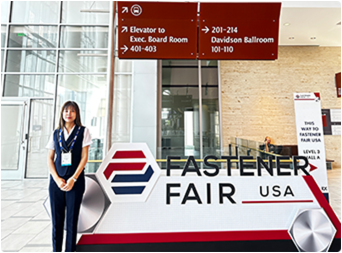Dec . 13, 2024 09:05 Back to list
L-Type Anchor Bolts for Secure Construction Applications and Enhanced Stability
Understanding L-Type Anchor Bolts A Comprehensive Guide
Anchor bolts are essential components in construction, serving to attach structural elements to concrete foundations. Among the various types of anchor bolts available, L-type anchor bolts play a crucial role in ensuring stability and strength in various applications. This article delves into the specifications, applications, advantages, and installation process of L-type anchor bolts.
What Are L-Type Anchor Bolts?
L-type anchor bolts are characterized by their unique L-shaped design, consisting of a straight shank with a 90-degree bend at one end. This configuration allows for effective anchoring in concrete structures, as the bent end provides a greater surface area for resistance against pullout forces. Typically, these bolts are used in situations where a robust connection between a fixed element and a concrete foundation is necessary.
Specifications of L-Type Anchor Bolts
When considering L-type anchor bolts, several specifications are vital
1. Material Common materials used for L-type anchor bolts include carbon steel, stainless steel, and galvanized steel, each offering different levels of corrosion resistance and strength.
2. Size L-type anchor bolts come in various sizes, with diameter and length tailored to the demands of specific projects. The size chosen should correspond to the load-bearing requirements and the dimensions of the structure to which they will be attached.
3. Grade The grade of the bolt indicates its material strength. Higher-grade bolts can bear more substantial loads and are preferable in applications involving significant stress.
4. Coating Coatings, such as hot-dip galvanizing or epoxy, enhance corrosion resistance, making them suitable for outdoor or marine environments.
Applications of L-Type Anchor Bolts
L-type anchor bolts are versatile and find applications in various scenarios, including
1. Building Foundations They are frequently used to secure columns, walls, and other vertical supports to the concrete foundation, ensuring stability.
2. Equipment Installation In industrial settings, L-type anchor bolts are utilized to secure heavy machinery and equipment to a concrete slab, preventing movement or tipping.
3. Infrastructure Projects These bolts are foundational in constructing bridges, towers, and other infrastructure where safety and load-bearing capacity are critical.
anchor bolt l type

4. Earthquake-Resistant Structures L-type anchor bolts are integral to constructing buildings designed to withstand seismic forces, providing added stability during earthquakes.
Advantages of L-Type Anchor Bolts
The unique design of L-type anchor bolts offers several advantages
1. Enhanced Pullout Resistance The L-shaped configuration increases the surface area in contact with concrete, improving resistance to pullout forces compared to straight anchor bolts.
2. Ease of Installation L-type anchor bolts can be easily set in concrete forms, making installation straightforward for construction teams.
3. Versatility Their adaptability for various loads and applications makes them a reliable choice for many construction projects.
4. Durability With appropriate materials and coatings, L-type anchor bolts can withstand harsh environmental conditions, ensuring longevity.
Installation of L-Type Anchor Bolts
The installation process of L-type anchor bolts is critical for ensuring their effectiveness
1. Preparation Begin by determining the required spacing and positioning based on engineering requirements. Mark the locations on the concrete where the bolts will be placed.
2. Setting the Bolts In the concrete formwork, the bolts should be anchored securely, ensuring that the L-shaped end is buried adequately to provide sufficient hold.
3. Pouring Concrete Once the bolts are positioned, concrete is poured into the forms, encapsulating the bolts and allowing for proper curing time.
4. Final Adjustments After curing, ensure that the bolts are aligned correctly to attach structural elements without any hindrance.
Conclusion
L-type anchor bolts are a vital component in modern construction. Their unique design, robust performance, and versatility make them suitable for various applications, ensuring the safety and stability of structures. Understanding the specifications, benefits, and installation processes associated with L-type anchor bolts is essential for engineers and builders alike, as their proper use contributes significantly to the overall integrity of construction projects.


